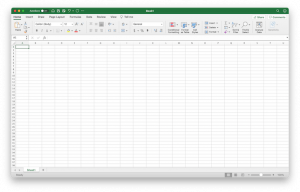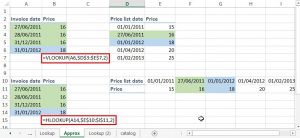We all know that Bing Ads is a great way to expand successful paid search campaigns. While autotagging makes sharing AdWords data with Google Anlaytics easy as pie, tracking Bing Ads analytics data requires a bit more effort. The Google Campaigns URL Builder is a nice reference, but takes far too long to use on any account of significant size. We’ll take advantage of Microsoft Excel and a few simple formulas to make tagging your Bing Ads destination URLs seem like a walk in the park. Of course, this this doesn’t just apply to Bing Ads and can be applied to any other traffic source that you may want to track.
Traffic Source, Medium, and Campaign
The beginning of the Google Analytics tracking parameters will need to begin with a ‘?’ with each additional parameter being preceded by ‘&’. One issue to remain aware of is that some URLs may already contain a ‘?’. If this is the case, you’ll want to begin your with an ‘&’ instead.
www.superwidgets.com?
In general I’ve found that it’s simplest to first begin by appending the destination URLs with parameters and values that will remain static. Typically this will be the destination URL concatenated with utm_source and utm_medium parameters along with the beginning of the utm_campaign parameter.
www.superwidgets.com?utm_source=bing&utm_medium=cpc&utm_campaign=
Campaign and Adgroup Population
The next step is to populate the utm_campaign parameter. This can vary depending on your personal style and how you prefer to manage your Bing Ads account. A simple approach is to populate the utm_campaign parameter with a combination of the campaign and adgroup name with each separated by a dash. By using Excel’s Text to Columns feature to split by the dash, data manipulation and analysis become much easier. The SUBSTITUTE function will enable you to either remove or replace unwanted characters.
www.superwidgets.com?utm_source=bing&utm_medium=cpc&utm_campaign=Widgets-BlueWidgets
Depending on your preferred campaigns and adgroup naming convention, you may also want to utilize HTML URL encoding to supply special characters that have been used. This will ensure that each of your URLs remain intact and that the characters are populated within Google Analytics. Having the characters intact within GA will also make it easier to perform any lookups that combine Bing Ads account and analytics data. For example, a space is represented by %20.
www.superwidgets.com?utm_source=bing&utm_medium=cpc&utm_campaign=Widgets-Blue%20Widgets
Find Your Keywords
Keywords are like PPC gold, so it’s only natural that we use utm_term to include the Bing Ads {keyword} parameter to gather keyword data that triggered the ad.
www.superwidgets.com?utm_source=bing&utm_medium=cpc&utm_campaign=Widgets-Blue%20Widgets&utm_term={keyword}
Bonus: Match Types and Query Data
An added bonus is to incorporate MatchType, BidMatchType or QueryString. Since you already have Bing Ads conversion tracking code properly implemented and can pull search query data directly from within Bing Ads, the biggest benefit will come knowing the match type that is associated with the click.
Double Bonus: Automating ? and & Substitution
If you tagging a large campaign or account with mixed ‘?’s in some of the URLs, then you can combine a couple of quick FIND and IF functions to recognize the change and use the SUBSTITUTE function to modify the ‘?’ or ‘&’ where appropriate. It’s a lot better than trying to manually inspect and change each URL.
There’s Still So Much More
So there it is, the simple and fast way to correctly tag your Bing Ads URLs with Google Analytics tracking code. There are a number of additional Bing Ads parameters that can combined to create your own perfect Analytics recipe. Explore, enjoy, and let me know some of your favorite combinations!






